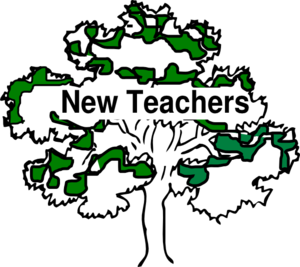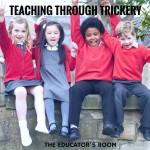[fusion_builder_container hundred_percent=”yes” overflow=”visible”][fusion_builder_row][fusion_builder_column type=”1_1″ background_position=”left top” background_color=”” border_size=”” border_color=”” border_style=”solid” spacing=”yes” background_image=”” background_repeat=”no-repeat” padding=”” margin_top=”0px” margin_bottom=”0px” class=”” id=”” animation_type=”” animation_speed=”0.3″ animation_direction=”left” hide_on_mobile=”no” center_content=”no” min_height=”none”]

This is part four of a five-part series, but it would be dishonest to say this was the fourth week. No, I disappeared from the blogosphere for two weeks, leaving this series without update. I guess that’s indicative of the first year of teaching: my priority is my classroom, and when I got bogged down with classroom-related stuff, the other parts of my life (i.e., this series) got pushed to the backburner.
I have written before about the importance of maintaining a work-life balance – but I do not always practice what I preach. While I have been doing better with coming home at a decent hour, lately I’ve been bringing more work home, spending more time on lesson-planning, and just being exhausted. I blamed it on a few things: the fact that I’m teaching less familiar content now, that my AP class is in crunch-time, and that I haven’t had a day off of school since Labor Day. Well, maybe that last excuse is accurate; after all, it took having Veterans’ Day off for me to feel reinvigorated enough to return to writing!
And actually, my absence is related to today’s topic: building relationships with students. Afterall, the reason I am so invested in my classroom is that I care about my students’ learning. I don’t want to waste their (or my) time. I respect them as learners and as human beings, so I seek to be my best so that they can be their best.
So far, in my whoppin’ three months of teaching, I have learned three valuable lessons about my students. These revelations have greatly shaped the relationships I build with them.
(1) There is a difference between being liked and being respected. And here’s the secret: respect begets love. So many new teachers want to be cool, to have their class be the most fun part of the students’ day, and get high-fives in the hallway. It’s difficult to figure out how to respond to the moans before a quiz, and it’s easy to give in to students’ requests for a movie day.
Yet they really need to be held accountable to high expectations. If you constantly push them to do more (with proper scaffolding, of course) and strive toward excellence, they will see that you respect them as learners, your classroom as a space for learning, and yourself as a professional. You care so much about them that you won’t give up on them – and while they may whine occasionally, they will gradually feel empowered as they are able to succeed in your classroom. Yes, be totally willing to adapt the material to your group of students, but never “dumb it down.” You don’t want to be the “easy A,” but the challenging, rewarding class.
(2) You are their teacher, not their best friend. This is more a subpoint of the above than it is its own point – and this is more of a challenge for me personally. A lot of new teachers tend to be on the younger side, so it’s easier to relate to students. We watch some of the same TV shows, I’m very familiar with internet memes and trends, and I know about their favorite bands. This allows me to really connect with my students and get a more holistic idea of who they are – but it also sometimes runs the risk of becoming more friend than the teacher. Ultimately there is a power dynamic present, and ultimately I’m responsible for their learning in my classroom. It is a tricky balance to strike—to be respected as a content expert, but also to be able to relate beyond the content—but it is a very important dynamic of which to be sensitive, especially as a new teacher.
(3) Just because a student acts one way in my class doesn’t mean he acts that way in all his classes. Before this term, I assumed who a student is academically with me is how he/she must be in all his/her classes. I know my students have different identities outside of school—sons/daughters, athletes, employees, friends, etc.—but their school identity has to be fairly consistent, right? Wrong.
A few weeks into the term, I decided to do a positive phone call home for one of my students. He was getting a B in my class, and is always on task and participating. I asked his mom what the student wants to do after high school; after all, he has the skills to succeed in college. She then told me his grades are not good enough for college – huh? I checked his transcript, and sure enough, he has plenty of Ds and Fs. I told a teacher friend about this, who then told me the student used to be in his class, and was completely disruptive and defiant. Really?!?
On the other hand, I have a very quiet student who failed my government class due to missing assignments. She never turned in any major projects or completed any assessments, despite all my interventions with her. Yet she’s doing well in AP science and in guitar class.
This really taught me that there is more to each student academically than what I see in my classroom. I believe it was Lisa Delpit who said that students are like chameleons – they have mastered the art of adapting to each classroom and meeting the demands of each teacher. I am learning that this adaptation can manifest itself in different student behaviors and performances in each class… so how can I make my classroom a safe but challenging space that helps each student be the best academic self he or she can be?
The best foundation upon which to build relationships with students is really becoming aware of who they are holistically, genuinely caring about them, and continuously pushing them toward excellence in your classroom. While these seem like pretty obvious remarks, they really are meaningful lessons I have taken from my teaching experience thus far. And it’s always valuable to be reminded of the basics, right?
The New Teacher’s Survival Guide is a five-part series, written by first-year high school teacher Dana Dooley. Start from the beginning with part 1, here.[/fusion_builder_column][/fusion_builder_row][/fusion_builder_container]




